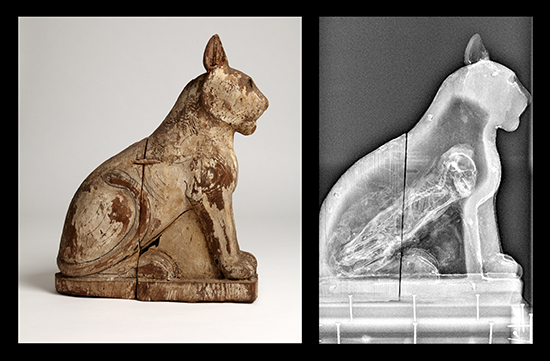CT scanning of animal mummies reveals some surprises

Cat coffin (left), when scanned, reveals its contents.
In the largest project of its kind, scientists at the University of Manchester have been using CT scans and X-rays to identify, noninvasively, what lurks below the surface of Ancient Egypt’s animal mummy cloths. The results surprised them.
Of the 800 mummies scanned, one-third revealed no animal or skeletal remains. (Another third contained complete animals, and another third contained partial animals.)
So what was inside?
"Basically, [the mummies contained] organic material such as mud, sticks and reeds, that would have been lying around the embalmers' workshops, and also things like eggshells and feathers, which were associated with the animals, but aren't the animals themselves," Lydia McKnight, PhD, Research Associate, Ancient Egyptian Bio Bank Project at the University of Manchester, told the BBC.
That doesn’t mean a con game was going on. “The materials that they were using were just as important as the animals themselves,” McKnight told The Washington Post.
Perceived as sacred totems, animal mummies fell in one of four categories: cult animals with their own tombs, pets enshrined with their owners, animals mummified as food for their owners during the journey, and still others (the largest category) as votive offerings, reports The Washington Post.
It was also an industrial-scale operation, McKnight told the BBC. The Egyptians left behind more than 70 million animal mummies, including dogs, cats, birds, crocodiles and monkeys.
The study of animal mummies is a relatively new field of research. The University of Manchester research project hopes to catalogue consistent data from animal mummies in museum collections outside Egypt, including Britain, Europe, and the United States.
The Manchester Museum will showcase the animal mummies in an exhibit on October 8, 2015.
Photo courtesy of Manchester Museum, The University of Manchester



